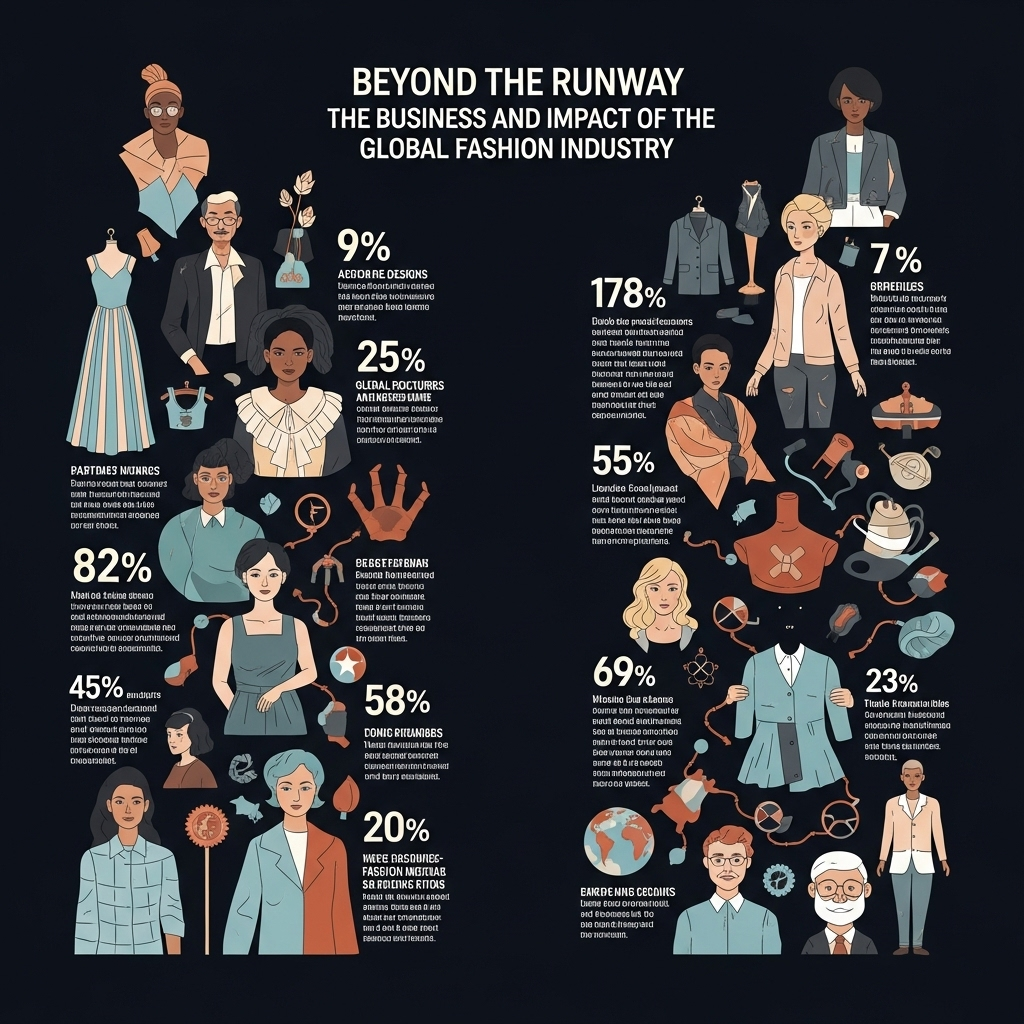Blog
Beyond the Runway: The Business and Impact of the Global Fashion Industry

The dazzling spectacle of the runway, the glossy pages of fashion magazines, and the curated feeds of social media influencers represent only the tip of the iceberg when it comes to the vast and intricate world of the global fashion industry. Far from being merely about aesthetics, fashion is a multi-billion dollar enterprise, employing millions worldwide and wielding significant economic, social, and environmental influence. Understanding its complex machinery, from design and production to retail and consumption, is crucial to appreciating its true power and impact.
At its core, the fashion industry is a creative powerhouse driven by designers who envision new trends and translate them into tangible garments. From haute couture, which caters to an exclusive clientele with bespoke, handcrafted pieces, to ready-to-wear collections that are mass-produced for a wider market, the design process is meticulous and often involves extensive research into fabrics, silhouettes, and cultural influences. Fashion weeks, held in major cities like Paris, Milan, New York, and London, serve as critical platforms for designers to showcase their latest creations, setting the tone for upcoming seasons and influencing global trends. These events are not just about artistic expression; they are vital trade shows where buyers from around the world place orders, fueling the industry’s economic engine.
Following design, the production phase is where creativity meets industrial scale. This involves sourcing raw materials, primarily textiles, from various corners of the globe. The journey of a garment from cotton field to finished product is long and complex, often crossing multiple international borders. Manufacturing typically takes place in countries with lower labor costs, leading to massive production hubs in Asia, particularly China, Bangladesh, and Vietnam. This globalized supply chain, while efficient in terms of cost and scale, has also been a source of significant ethical and environmental concerns. Issues such as exploitative labor practices, unsafe working conditions, and inadequate wages for garment workers have drawn widespread criticism and spurred calls for greater transparency and fair trade practices.
The finished products then enter the retail phase, which has undergone a dramatic transformation in recent decades. Traditional brick-and-mortar stores, once the primary distribution channel, now compete fiercely with e-commerce platforms. The rise of online shopping has democratized access to fashion, allowing brands to reach a global audience and consumers to shop from the comfort of their homes. This shift has also given rise to new business models, such as direct-to-consumer (DTC) brands and subscription services, further fragmenting the retail landscape. Marketing and branding play a crucial role in this stage, with companies investing heavily in advertising, celebrity endorsements, and social media campaigns to capture consumer attention and build brand loyalty.
The economic impact of the fashion industry is undeniable. It contributes significantly to national GDPs, creates millions of jobs across various sectors – from textile manufacturing and design to marketing and retail – and drives innovation in technology and logistics. However, its rapid growth, particularly in the “fast fashion” segment, has also brought about substantial environmental consequences. The production of textiles is resource-intensive, requiring vast amounts of water, energy, and chemicals. The dyeing and finishing processes can pollute waterways, and the disposal of discarded garments contributes to mounting landfill waste. The sheer volume of clothing produced and consumed annually has led to a linear “take-make-dispose” model that is increasingly unsustainable.
In response to these challenges, there is a growing movement towards sustainability and ethical practices within the fashion industry. Consumers are becoming more conscious of the environmental and social footprint of their purchases, demanding transparency from brands and opting for more sustainable alternatives. This has led to the emergence of eco-friendly fabrics, circular fashion models (where garments are designed for longevity and recyclability), and a greater emphasis on repairing, reusing, and reselling clothing. Brands are investing in sustainable supply chains, reducing waste, and implementing fair labor practices, not just as a moral imperative but also as a response to evolving consumer demand and regulatory pressures.
The future of the fashion industry will likely be shaped by technological advancements, evolving consumer behaviors, and a continued focus on sustainability. Artificial intelligence and machine learning are being used for trend forecasting, inventory management, and even personalized shopping experiences. 3D printing and virtual reality are opening up new possibilities for design and presentation. The rise of the metaverse and digital fashion offers entirely new avenues for creativity and consumption, blurring the lines between the physical and virtual worlds.
In conclusion, the global fashion industry is a colossal and complex ecosystem that extends far beyond the glamorous images seen on runways. It is a powerful economic force, a significant employer, and a major influencer on culture and society. While it faces considerable challenges related to sustainability and ethics, there is a growing collective effort to transform it into a more responsible and equitable industry. As consumer awareness increases and technological innovation continues, the business of fashion will undoubtedly continue to evolve, striving to balance creativity and commerce with social and environmental responsibility, ensuring its continued relevance and impact for generations to come.
